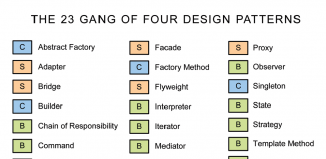Understanding the nuts and bolts of CodeIgniter framework in PHP
If you’re an avid PHP lover then I’m sure you must have definitely heard about the Codelgniter framework. Well, if you haven’t then no need to worry because this is the blog that will tell you everything about the very popular and trendy ColdeIgniter framework used in PHP programming. Whether you’re planning to build a fine-quality PHP application or a brand new website, Codelgniter will allow you to save a considerable amount of time and effort on serving your clients with the expected final product.
There’s a lot more to unveil about this absolutely enchanting PHP web development framework. So, let’s go ahead and explore more about it.
What exactly is a ‘Framework’?
Well, before proceeding ahead with the ins and outs about CodeIgniter PHP framework, let me make you familiar with what exactly is a framework. The term ‘framework’ refers to a collection of support programs, tool sets, code libraries and APIs (Application Programming Interfaces) that aid a developer in executing a web development project with ease. The pre-built functions of a framework enable easier and faster project completions.
A brief on Codelgniter’s role as a PHP web development framework?
As one of the most loved PHP frameworks among developers, Codelgniter allows you to build better apps and sites via clean and crisp coding. Being a free and simple to install framework, Codelgniter can be easily used by amateurs in the field of PHP web development. Equipped with a rich set of libraries, simple interface and a logical structure, Codelgniter serves as the best toolkit for individuals who want to build high-performing applications using PHP. With Codelgniter, you can minimize the amount of coding that’s required for completion of a particular task within the app/website development project. Codelgniter’s version 1.5 consumes only 737 KB of system space, preventing you from the hassles of waiting for a long time to download the entire software program. You can simply visit the official website at codeigniter.com and download the software in a convenient way.
CodeIgniter – A brief on installation process
You can choose to install CodeIgniter using the following 4 steps:
Step 1 – Unzip the downloaded CodeIgniter package.
Step 2 – Upload the CodeIgniter files and folders to your web server, keeping index.php as the root file.
Step 3 – Now, open the application/config/config.php file containing the text editor and set the base URL.
Step 4 – If you’re inclined on using a database, then open the application/config/database.php file containing the text editor and set the preferred database settings.
As an approach to increase the system security, you may opt for hiding the location of your CodeIgniter files by renaming the system folder to something that’s more difficult to crack. On renaming the system folder, do open the main index.php file and set the $system_folder variable located towards the top of the page with the new name that you’ve chosen for the respective folder.
CodeIgniter – How does it work?
Serving itself as one of the best PHP frameworks, CodeIgniter does the following:
- It generates clean URLs – All the URLs generated by CodeIgniter are clean, crisp and search engine friendly. Using a segment-based coding approach, CodeIgniter ensures that its users aren’t held prey to buggy codes and ill-treated methods and functions.
- It ensures component singularity – Component singularity is one of the major functions performed by CodeIgniter. The term ‘singularity’ refers to the degree to which different project components has a specific focused purpose. All the classes and related functions used in CodeIgniter are kept autonomous, as an attempt to optimize usefulness.
- It ensures dynamic manifestation – While working with the CodeIgniter framework, you’ll find that all the components are loaded and all the routines are executed only when they’re requested to do so. With no assumptions being pre-made by the system, you can enjoy faster web development by default. The events triggered by the HTTP request coupled with the views and controller will actually determine the method/function that needs to be invoked.
CodeIgniter- Whom does it suite the best?
CodeIgniter can serve as your perfect partner during PHP web development if:
- You’re in need of a framework that’s equipped with a small footprint
- You need a PHP framework that comes with zero configuration
- You require a wide compatibility with hosting account that operate a variety of PHP versions and configurations.
- You don’t want to get stressed by learning a brand new templating language
- You need a clear and well-defined documentation
Wrapping Up
As a remarkable enterprise class PHP web application development framework, CodeIgniter works for business professionals who need to upgrade their offerings on a regular basis and want to inform their customers regarding the same. A PHP-based MVC framework, CodeIgniter comes with a low learning curve, making it comfortable for the novice PHP developers to embrace it with full zest.










